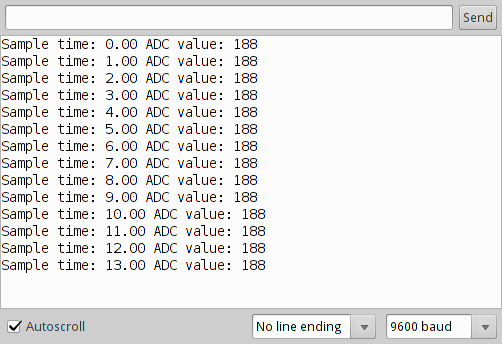I'm having trouble to read more than one character using my program, i cant seem to figure out what went wrong with my program, as i'm very new to python. Import serial ser = serial.Serial( port='COM5', baudrate=9600, parity=serial.PARITY_NONE, stopbits=serial.STOPBITS_ONE, bytesize=serial.EIGHTBITS, timeout=0) print('connected to: ' + ser.portstr) count=1 while True: for line in ser.read(): print(str(count) + str(': ') + chr(line) ) count = count+1 ser.close() here are the results i get connected to: COM5 1: 1 2: 2 3: 4 4: 3 5: 1 actually i was expecting this connected to: COM5 1:12431 2:12431 something like the above mentioned which is able read multiple characters at the same time not one by one. I see a couple of issues.
Free Download Driver Dell Inspiron 15 3000 Series. (Most of the code is from here Full examples of using. Arachnid Dart Board Software. Stack Overflow. PySerial write() won't take my string. Serial readline method in python 3.x.


First: ser.read() is only going to return 1 byte at a time. If you specify a count ser.read(5) it will read 5 bytes (less if timeout occurrs before 5 bytes arrive.) If you know that your input is always properly terminated with EOL characters, better way is to use ser.readline() That will continue to read characters until an EOL is received. Second: Even if you get ser.read() or ser.readline() to return multiple bytes, since you are iterating over the return value, you will still be handling it one byte at a time. Get rid of the for line in ser.read(): and just say: line = ser.readline(). Serial sends data 8 bits at a time, that translates to 1 byte and 1 byte means 1 character. You need to implement your own method that can read characters into a buffer until some sentinel is reached.
The convention is to send a message like 12431 n indicating one line. So what you need to do is to implement a buffer that will store X number of characters and as soon as you reach that n, perform your operation on the line and proceed to read the next line into the buffer. Note you will have to take care of buffer overflow cases i.e.
When a line is received that is longer than your buffer etc. EDIT import serial ser = serial.Serial( port='COM5', baudrate=9600, parity=serial.PARITY_NONE, stopbits=serial.STOPBITS_ONE, bytesize=serial.EIGHTBITS, timeout=0) print('connected to: ' + ser.portstr) #this will store the line line = [] while True: for c in ser.read(): line.append(c) if c == ' n': print('Line: ' + line) line = [] break ser.close().
I was reciving some date from my arduino uno (0-1023 numbers). Using code from 1337holiday, jwygralak67 and some tips from other sources: import serial import time ser = serial.Serial( port='COM4', baudrate=9600, parity=serial.PARITY_NONE, stopbits=serial.STOPBITS_ONE, bytesize=serial.EIGHTBITS, timeout=0) print('connected to: ' + ser.portstr) #this will store the line seq = [] count = 1 while True: for c in ser.read(): seq.append(chr(c)) #convert from ANSII joined_seq = '.join(str(v) for v in seq) #Make a string from array if chr(c) == ' n': print('Line ' + str(count) + ': ' + joined_seq) seq = [] count += 1 break ser.close().
Single-port TCP/IP - serial bridge (RFC 2217) Simple cross platform serial port server. It uses threads and is portable (runs on POSIX, Windows, etc). • The port settings and control lines (RTS/DTR) can be changed at any time using requests. The status lines (DSR/CTS/RI/CD) are polled every second and notifications are sent to the client. • Telnet character IAC (0xff) needs to be doubled in data stream.
IAC followed by another value is interpreted as Telnet command sequence. • Telnet negotiation commands are sent when connecting to the server. • RTS/DTR are activated on client connect and deactivated on disconnect. • Default port settings are set again when client disconnects. Usage: rfc2217_server. Py [ - h ] [ - p TCPPORT ] [ - v ] SERIALPORT RFC 2217 Serial to Network ( TCP / IP ) redirector.
Positional arguments: SERIALPORT optional arguments: - h, -- help show this help message and exit - p TCPPORT, -- localport TCPPORT local TCP port, default: 2217 - v, -- verbose print more diagnostic messages ( option can be given multiple times ) NOTE: no security measures are implemented. Anyone can remotely connect to this service over the network. Only one connection at once is supported. When the connection is terminated it waits for the next connect. Multi-port TCP/IP - serial bridge (RFC 2217) This example implements a TCP/IP to serial port service that works with multiple ports at once. It uses select, no threads, for the serial ports and the network sockets and therefore runs on POSIX systems only.